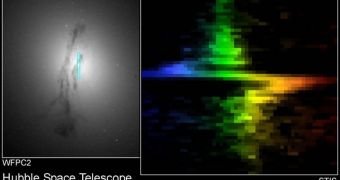Astronomers have been proposing for many years that all galaxies have a black hole at their cores. This was proven to be true time and time again, even in our own Milky Way. But a recent study has revealed that the famous galaxy M85 does not have such a companion, and scientists are now wondering why.
What is so interesting about this discovery is that even numerous dwarf galaxies were found to contain black holes at their cores. So why doesn't M85 have a similar structure? What makes the galaxy special? Did the black hole get ejected millions of years ago?
Kicking an object that represents the embodiment of massive gravity out of a galaxy is no mean feat. One of the dark behemoths such as those found at galactic cores weigh at least several million solar masses, and have nearly-incalculable gravitational pulls.
As such, when astronomers at the University of Michigan in Ann Arbor made their discovery, they could not believe their data. After checking and double-checking the results, they finally released them for peer-review, Universe Today reports.
In the new study, experts used the NASA/ESA Hubble Space Telescope to quantify the gravitational pull the black hole at the center of M85 had on the objects around it. This technique was used successfully on a number of previous occasions, including when analyzing the M84 galaxy.
However, when it was applied to M85, it returned none of the results the team was expecting to see. In M84, the central black hole was determined to weight more than 300 million solar masses in 1997.
But the U-M team is not the first to have failed to discover the black hole that should exist in this weird galaxy. In 2009, Italian researchers from the Osservatorio Astronoimco di Torino – led by expert Alessandro Capetti – discovered no traces of the object in M85.
The study highlights the lack of efficiency in indirect black hole detection methods. When it comes down to it, it's a matter of luck to identify the necessary physical phenomena that point at the existence of a dark behemoth in a studied galaxy.
Until astronomers develop a method that allows them to study a black hole directly, such instances of missing black holes might multiply. At the same time, it could be that M85's black hole was indeed ejected out of the galaxy by an yet-unknown phenomenon.
At this point, researchers can only hypothesize about what happened.

 14 DAY TRIAL //
14 DAY TRIAL //